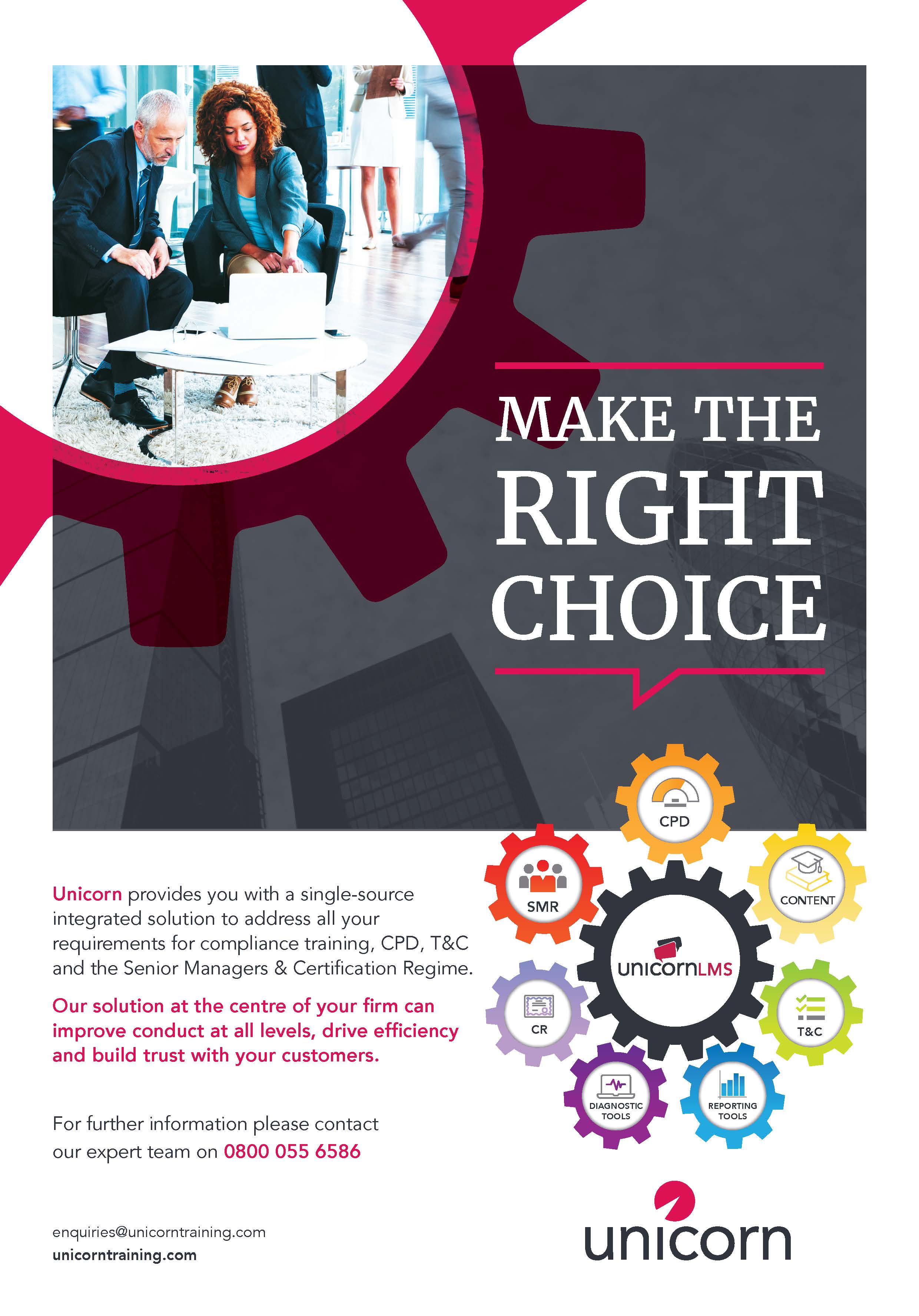At a recent industry forum, Richard Whittington, Product Owner – Digital Learning & Compliance, Access Group, asked a seminar audience, if, as the people responsible for learning and development in their firm there was a culture that supports it. The majority of hands stayed down.
When I saw all those hands stay down, I empathised. I’ve been in those shoes.
I’ve been the person who believes training and learning should pervade all parts of a firm. But who has struggled to make inroads into getting the support, time and resource – human and financial – to really make a difference through training when ticking regulatory boxes is the only thing that’s really valued.
Understand how to develop a learning culture.
This underpins everything.
Culture is top-down, so influencing your senior leaders is key. What are their business goals and aims and how can your training strategy help match these?
If you can inspire them to invest in the time and resource to do what you need to do, they will naturally influence the management team and it’s the management who hold the keys to influencing employees, i.e. the people whose behaviours you want to change. The employees then become your advocates and training champions.
If you get the culture, you’ve got the buy-in and if you’ve got the buy-in, you can deliver a strategy
Recruitment, induction, succession and career development planning are great ways to promote your firm’s learning and training culture, and to bring staff onboard in a way that they can see what’s in it for them, as well as the big picture.
Is L&D mentioned in job ads or on your website? Is it talked about at interviews or as part of a new joiner’s induction? Is it tied into any professional development KPIs? How do you identify potential future leaders and managers? Are career development pathways lined up for them? How do you manage these? Can you create learning pathways in your LMS and deploy content to develop them? Are there individuals who would benefit from re-doing part of a revamped induction?
If you’re not sure, or the answers to any of these are ‘no’, evaluate and improve what you do. Chat to your recruitment team and work with line managers on how L&D can be discussed in the context of the new recruit’s specific job role.
For succession and career development planning, look at where staff are now, where the potential is, how you can get them from A-B, their readiness for promotion and if there are there any ‘flight risks’, etc.
Going through such an evaluation process will also help you identify any potential single points of failure in your teams; where only one or a handful of individuals has knowledge or can fulfill a specific role within the firm. We’ve seen in some very high profile outage incidents the financial and reputational cost of not having equally well-trained B, C and even D teams. So how can you mitigate that?
If you get the culture, you’ve got the buy-in and if you’ve got the buy-in, you can deliver a strategy.
How eLearning can play key role in your strategy
There are many options to deliver training – face-to-face, internal, external, eLearning or a blended approach of all. Whether you already use eLearning or not, it can help you effectively deliver your strategy.
Moving training online is a great way to increase ROI and improve efficiency as the ability to automate so many mandatory tasks reduces admin time for your L&D teams. Training completion rates also typically increase. Many LMSs, including our ComplianceServe solution, come with an app that allows training to be done offline, and staff expect such accessibility now.
Completion rates are a primary way to evaluate effectiveness and are a great starting point when considering how implementation can be improved. Can you turn the traditional model of a compliance course being pushed out once a month on its head and promote a culture that encourages staff to pull training down from what’s on offer on your LMS rather than waiting to be told what to do and when?
Time pressures also make eLearning an effective option as the ability to split content into bite-sized ‘microlearning’ chunks means it can be picked up and put down whenever suits the employee, including when they need a refresher. Most good quality courses have a blend of engaging content – gamification, quizzes, audio, video and case studies, animations, infographics, Q&As, assessments, etc – so staff can learn in the way they like most – improving knowledge retention. Telling a story through the course is powerful as people remember stories better than facts.
Commenting and reviewing is second nature to most of us now (think TripAdvisor, Amazin, Feefo, etc), and learning is no different. Most LMSs have integrated feedback tools to not only help staff choose recommended courses, but to assist you in evaluating the learning you’re putting out there, whether it’s your own content or from a third-party supplier. If staff feel they have a say in your courses, and they see things change from their feedback, they are more likely to stay engaged with it.
Also look out for LMSs with diagnostic tools. These tools can help you identify where your workforce sits now and give you valuable MI to report back to and influence your senior leaders. Diagnostics can be used at the assessment and reassessment stages too, to check ongoing competency and to really measure the impact the eLearning is having in shifting people’s behaviours.
What makes a successful compliance training roll-out?
So, you’ve got the senior leader buy-in and online training, now it’s time to put your strategy into action. Whatever you focus your strategy on, ensure it keeps your workforce up-to-date and compliant and it feeds into your organisational KPIs.
Your strategy will have different elements.
Who should be doing what is probably the most vital. There’s no point having a blanket approach to compliance training, where all staff at all levels do the same thing every month. Work with compliance and your business unit leaders to look at the content you’ve got and work out pathways for staff within their functions.
This will naturally create buy-in as these managers engage in the process and see the cost/time benefits of their staff just doing the training they need through automated content deployment, reminders and reporting. You can build out departmental/role-specific induction pathways from this point too.
When to do compliance training is the next question.
The vast majority of firms still follow the traditional ‘a course a month’ route, but you can do something different. Could you work with compliance to link training to when changes are actually happening, whether internal policy updates, hot industry topics or changes in regulation. This makes training relevant at the point of need.
Doing a topic a quarter is another option, so, for example, tackling all financial crime-related content (AML, bribery and corruption, fraud, etc) in one block so staff can really see how each topic lends itself to the next and they reinforce each other.
Or you could bring compliance training in line with the performance regime? Most staff have regular 121s, and mid and end year reviews, so why not use this as an opportunity to align learning? Making use of a diagnostic tool ahead of these meetings could help shape the topic of conversation too.
Are you going to use off the shelf (OTS) content or your own? Most good eLearning providers have tools so you can ‘top and tail’ OTS content. For example, add in your own case studies, policies, processes, procedures etc.
And how are you going to communicate what’s available to staff, and most importantly, why they should do it? Again, storytelling is a powerful asset and messages from senior leaders always have an impact. Showcase the relevance and fun aspects of the learning they will undertake and identify subject matter experts within the business who will champion your content, whilst also providing a ‘safe’ ear for staff to ask questions to, away from their manager or training team.
From there the circle continues.
Everything you’ve put in place starts to feed itself, leading to reviews and reflections, objectives being evolved, new KPIs being set and your workforce not only being continually kept up-to-date and compliant, but also empowered to progress their careers either within your firm or the wider industry.





